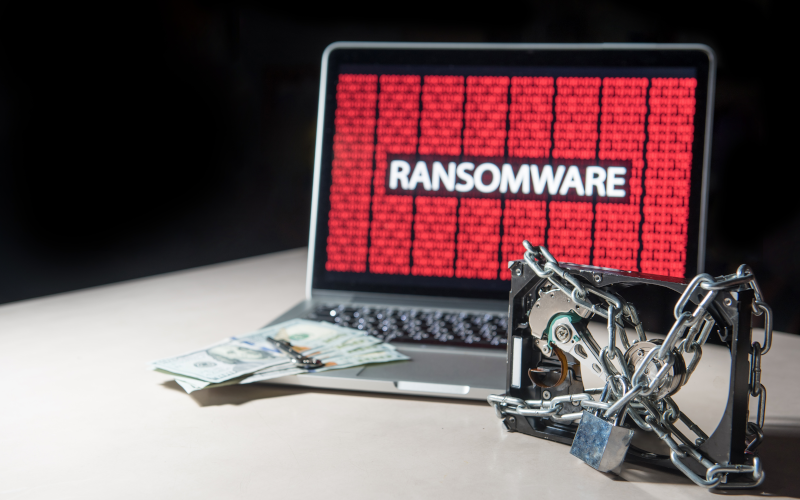
In the industrial world, there are a large number of systems, equipment, networks, areas, ducts, cloud environments, IT-OT environments, etc. In recent years, the number of attacks on industrial environments has been growing exponentially, and not only on purely industrial environments, but also on corporate environments that are connected to industrial environments. These IT environments being access points for attackers due to this IT/OT connectivity.

The Hive ransomware (especially in its v5 version) stands out for its sophistication, and for the impact caused to hundreds of companies and organizations worldwide, bypassing conventional defenses and challenging analysts with its advanced techniques.
In this article, we unravel its features, from its encryption methods to its anti-analysis countermeasures, illustrating not only the threat it poses, but also how it can be combated. Through a technical analysis, it is intended to empower readers with the knowledge necessary to understand and ultimately defend against these types of threats.

OSINT (Open-Source Intelligence) is a technique that focuses on the collection, evaluation and analysis of public information through different methods and techniques, with the objective of discovering vulnerabilities or collecting sensitive information that could become threats.
It should be emphasized that the data collection is not called OSINT, it would be raw information. Once this information is evaluated and treated, it could be said that we are really talking about open-source intelligence (OSINT).
Initially it has been used in the military and government sector. Its use in OT, with disciplines such as SIGINT (Signals Intelligence), IMINT (Imagery Intelligence) or even 'Sock Puppets' (fake profiles or intruders in technical forums) is making havoc due to the criticality of this equipment. Disinformation or the compilation of sensitive industrial technical information are some of the serious consequences that this sector is exposed to.

The Avaddon ransomware appears as a disturbing threat that has demonstrated its ability to exploit vulnerabilities in systems, compromising the security and integrity of critical data.
This article dives into the details of how Avaddon works, while also providing a comprehensive analysis of strategies to detect and mitigate the threat.

The automotive sector is currently moving towards electric consumption, as society is becoming more and more aware of the problems that environmental pollution can cause.
One of the big challenges of this trend is how to charge electric vehicles, for which charging points are currently used.
But like most of today's technological devices, they will also need to have access to an Internet connection in order to be able to monitor in real time the use of the station, the customer's banking information, etc.
For this reason, in this article we want to talk about the different risks or cyber-attacks that these charging points may suffer and the problems they may cause, as this is a very important sector for society and one that is capable of managing very sensitive information

The evolution of communications in society is also having an impact on the industrial world. With the arrival of 5G, many industrial companies have considered migrating some of their communications to take advantage of the characteristics of this new mobile communications band, such as the reduction of latency times, the increase in connection speed or the exponential increase in the number of devices that can be connected to the network. These characteristics fit perfectly with the industrial mentality, where there are a multitude of interconnected devices between which there cannot be a communication cut due to the criticality of the processes they implement.
This article aims to comment, in addition to all the advantages that 5G provides to the industry, the different uses that can be given currently and the complexity of implementing these communications in some devices for subsequent deployment in the industry. Also, to specify possible vulnerabilities in communications using 5G networks.

External access provides great convenience to workers, as it allows them to access any industrial equipment deployed in the field from the office or even further away. However, this type of access can pose a number of security problems for the company. This article reviews the main problems and how to solve them.

Within the industrial world, systems can be detected that do not have all their cybersecurity capabilities activated. This can occur for a variety of reasons, but if detected, each case must be analyzed to get the most out of each device.
The ability to robustly configure programs, services or other nuances within industrial systems is called bastioning and allows, among other things, to prevent assets from having a large exposure to the network or the solutions deployed in the system from having vulnerabilities resulting from misconfiguration.
In this article, we will begin by explaining what hardening is and how to apply it to our industrial network, along with some good practices to follow.

En este estudio, se expone brevemente el origen y evolución de la amenaza ransomware LockBit 3.0, a través del análisis de varias muestras maliciosa, con el objetivo de facilitar la información necesaria para poder identificar las características propias de este malware, su comportamiento y técnicas empleadas, permitiendo así una mejor identificación y respuesta ante ella.

Industrial Control Systems (ICS) were initially designed to work in sealed environments and as stand-alone systems, interconnections between systems were scarce, as were safety protections. The constant evolutions in the field of ICS, including the inclusion of a large number of communication protocols, IIoT devices, the expansion of interconnections, an incessant search for interoperability between systems and the inclusion of these architectures in critical systems, has meant that the networks on which these industrial control systems, has meant that the networks on which these industrial control systems are built, also known as control networks, have increased their security exponentially.



